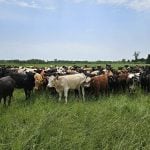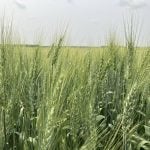Slow summer activity continued at the few Manitoba cattle auction yards that held sales during the first week of August. The general trend in the market remained pointed higher, though, as the slaughter backlog caused by the COVID-19 pandemic continued to be worked through.
“There are a couple of key drivers,” analyst Anne Wasko of the Gateway Livestock Exchange said of the firming trend in slaughter and feeder markets alike.
“Slaughter levels (in both Canada and the U.S.) have returned close to year-ago levels, faster than many people thought, which helped clear up a lot of the cattle that weren’t processed in April and May.”
Read Also

Canadian canola prices hinge on rain forecast
Canola markets took a good hit during the week ending July 11, 2025, on the thought that the Canadian crop will yield well despite dry weather.
Fewer cattle were also being placed on feed earlier in the year, with the reduced placements now also providing some support for prices.
The looming fall run will bring more challenges, “but I don’t think we’ll go back to the levels we saw unless there’s some sort of second wave that impacts plants the same as before,” Wasko said.
A COVID-19 outbreak at the Maple Leaf pork-processing plant at Brandon was being followed closely, while Wasko noted a number of poultry plants in the U.S. were also dealing with some cases.
“If we continue to march along as we are, then we are getting through cattle faster than we thought,” she said.
From a supply perspective, the market continues to slowly grind through its excess and could be back to more normal levels by October.
However, the demand side of the equation remains questionable.
While retail beef sales are strong, demand from restaurants and the food-service sector is down considerably due to the pandemic.
Restaurants “were certainly an outlet for our higher-valued cuts to move to the consumer,” Wasko said, adding that “the cut-out is still below where it was a year ago.”
Looking at ample feed supplies and declining grain prices, “from a cattle producer’s perspective, I don’t think cost of feed will be a negative impact heading into this fall run,” she said.




















